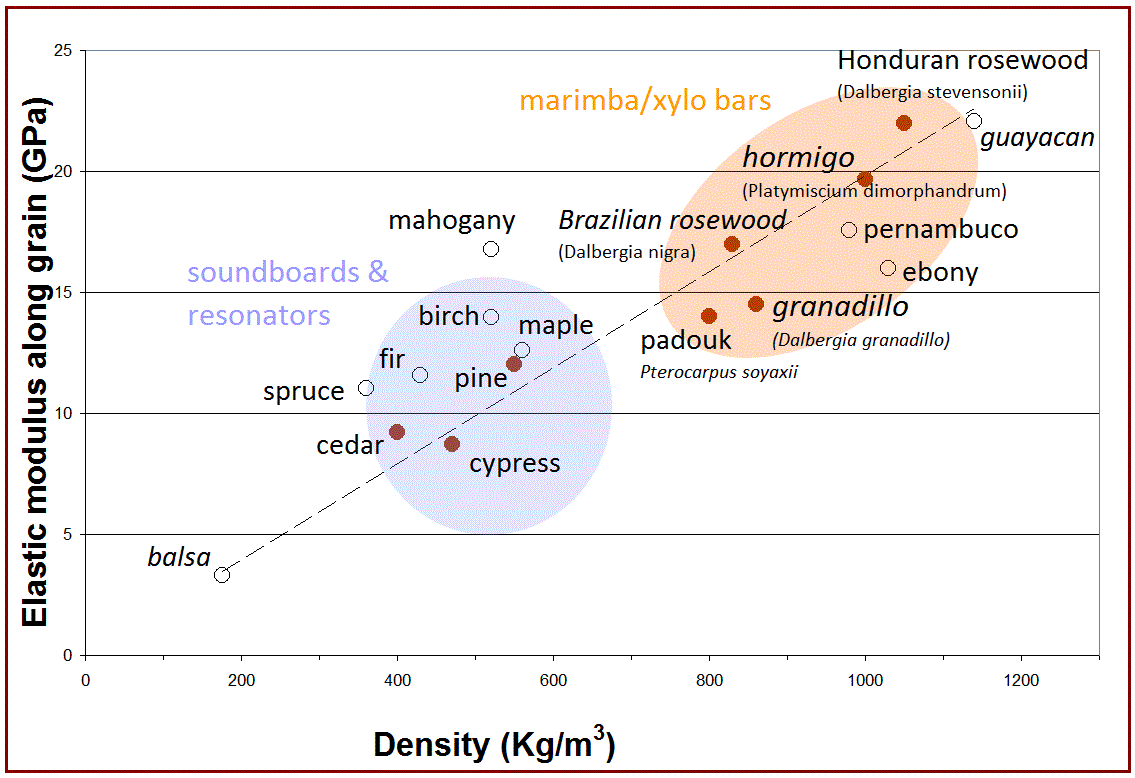Marimba: the perfect instrument to teach fundamental concepts in physics.
There is hardly a musical instrument that attracts more the attention of children than the marimba or the xylophone. The temptation to grab the mallets and hit the keyboard is natural and intuitive. That is why colorful xylophones are among the classic musical toys for small children.

The charm is further enhanced due to the fact that, hidden behind the seemingly simple arrangement of bars and boxes, one can find surprising principles of physics. Becoming familiar with these principles is very useful in many applications. For young people inclined to engineering and science, these principles govern the construction of musical instruments, the design of loudspeakers and headphones, the vibration of structures, the interaction of light waves with matter, the design of laser sources, the vibration of atoms in a crystal, and many more phenomena.
Condensed in this small and modest instrument are the concepts of harmonic motion, resonance among vibrating systems, the formation of stationary waves in a cavity, the propagation of waves through space (whether light, microwaves, sound, fluid waves, etc.), radiation patterns, superposition and interference, modes of vibration of solid objects, the mechanical properties of solids, and many other fundamental concepts. And all of this, before entering the fascinating world of psycho-acoustics, that is, the way we perceive the sound waves.
The marimba also contains concepts beyond linear approximations to vibration. For example, let's look at the intriguing effect of charleo or buzzing in Mesoamerican marimbas, produced by the addition of a semi-taut membrane to one side of the resonator. This non-linear effect results in a large number of odd harmonic frequencies above the fundamental mode of the resonator, which our auditory system and brain interpret together as the characteristic timbre of the Mesoamerican marimbas.
The most direct illustration of the parallel between acoustic and electromagnetic resonant systems is the comparison between the bar-resonator system of a marimba and the optical cavity of a laser source (the word laser is derived from the acronym "Light Amplification by Stimulated Emission of Radiation"). As illustrated in the figures below, the generation of the sound wave by the vibration of a bar corresponds to the excitation of an optical cavity by an external light source. The air column inside the marimba resonator corresponds to the space between two mirrors in the optical cavity of the laser. The lower end of both cavities is 100% reflective while the upper end is partially reflective. In both cases the wave propagates inside and along the cavity, forming a stationary wave (the superposition of the incoming and the returning waves) for specific values of wavelength. Finally, both resonators result in amplified waves emanating from them: the strong sound of the marimba, or the intense light of the laser beam.

Amplification of sound in a marimba using an acoustic resonance cavity.

Amplification of light in a laser source using a resonance optical cavity.
Although the analogy diverges in that the acoustic instance is a classical passive mechanical system, while the optical instance is one where quantum mechanics governs in an active medium, it is clear that understanding and experimenting with the former leads to an excellent introduction to the latter.
So, when children explore the sound effects of a marimba, they are also being introduced to physics under the spell of its sweet notes.
Efraín Figueroa Lemus, Ph.D., is the author of "La marimba mesoamericana: una historia ilustrada" (The Mesoamerican Marimba: an Illustrated History), Editorial Piedra Santa, 2016, currently available in Spanish.



















